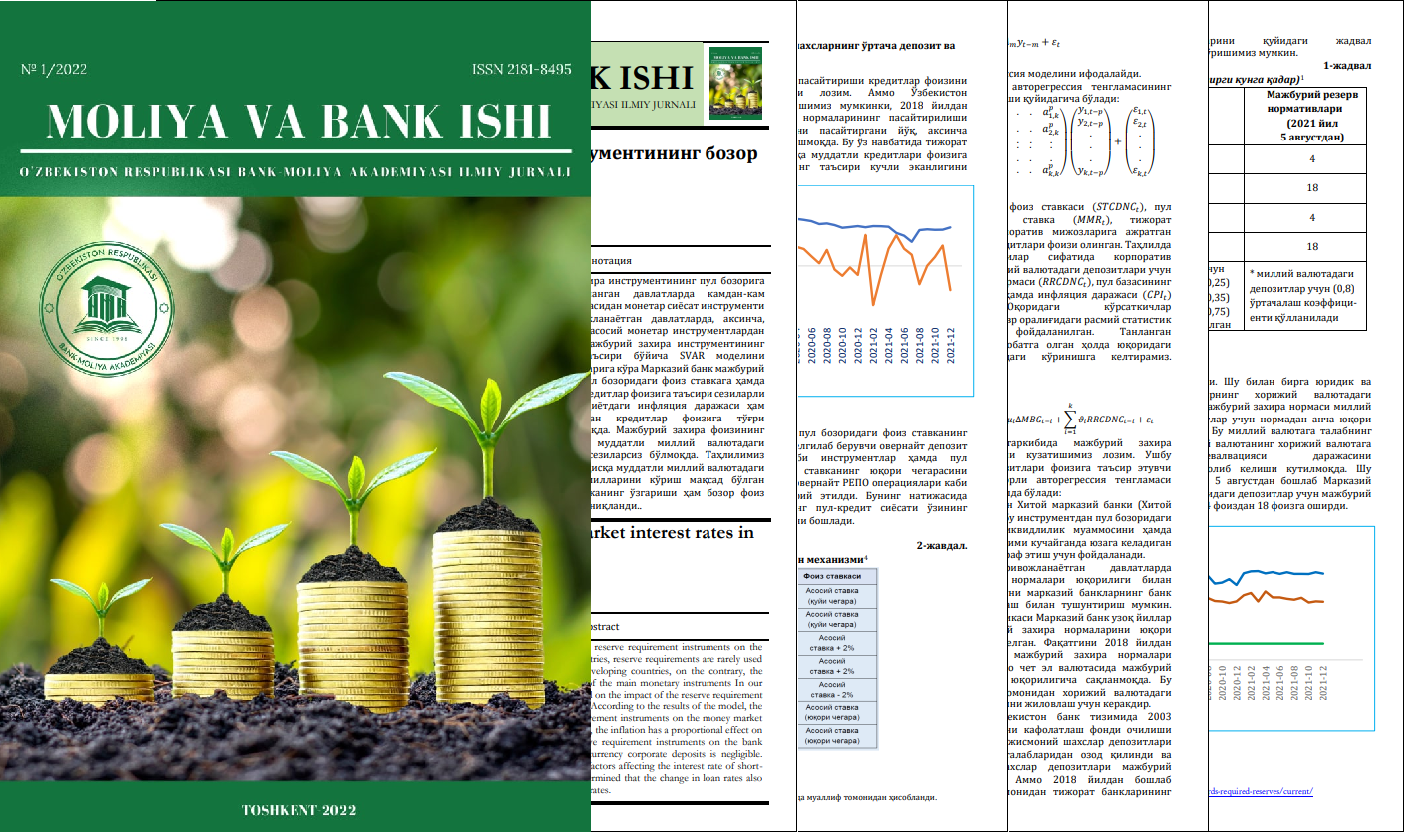Nashr maqolalari
Nashr qilingan 2022-12-29
Kalit so'zlar
- public debt, poverty, economic growth, institutional quality, inflation, human development.
Iqtibos
Sattoriy, F. (2022). Empirical analysis of the relationship between public debt and poverty reduction. MOLIYA VA BANK ISHI, 8(4), 63–69. Retrieved from https://journal.bfa.uz/index.php/bfaj/article/view/109
Аннотация
Библиографические ссылки
- Ashraf, M. W., Akhtar, M. J., Hafeez-ul-Rehman, P., & Awan, A. G. (2020). Impact of external debt on poverty in Pakistan. Glob. J. Manag. Soc. Sci. Humanit, 6, 251-271
- Bhattacharya, P. C. (2007). Economic development, gender inequality, and demographic outcomes: Evidence from India. Population and Development Review, 33(2), 263-291.
- Birdsall, N., Kelley, A. C., & Sinding, S. W. (2001). Population matters: Demographic change, economic growth, and poverty in the developing world. Oxford University Press.
- Bloom, D. E., & Canning, D. (2004). Global demographic change: Dimensions and economic significance. NBER Working Paper, No. 10817.
- Bloom, D. E., Canning, D., & Sevilla, J. (2003). The demographic dividend: A new perspective on the economic consequences of population change. RAND Corporation.
- Bulir, A. (2001). Income inequality: Does inflation matter? IMF Staff Papers, 48(1), 139-159.
- Chong, A., & Calderon, C. (2000). Causality and feedback between institutional measures and economic growth. Economics & Politics, 12(1), 69-81.
- Clements, B., Bhattacharya, R., & Nguyen, T. Q. (2003). External debt, public investment, and growth in low-income countries. IMF Working Paper, No. 03/249.
- Dabla-Norris, E., Kochhar, K., Suphaphiphat, N., Ricka, F., & Tsounta, E. (2015). Causes and consequences of income inequality: A global perspective. International Monetary Fund.
- Dollar, D., & Kraay, A. (2002). Growth is good for the poor. Journal of Economic Growth, 7(3), 195-225..
- Easterly, W. (2001). The elusive quest for growth: Economists' adventures and misadventures in the tropics. MIT Press.
- Easterly, W., & Fischer, S. (2001). Inflation and the poor. Journal of Money, Credit and Banking, 33(2), 160-178.
- Gupta, S., Davoodi, H., & Tiongson, E. (2001). Corruption and the provision of health care and education services. In The political economy of corruption (pp. 123-153). Routledge.
- Loayza, N. V., & Raddatz, C. (2010). The composition of growth matters for poverty alleviation. Journal of development economics, 93(1), 137-151.
- Mbang, O. M. (2021). External Public Debt and Poverty Reduction in Cameroon. Sch J Econ Bus Manag, 8, 351-363.
- Naeem, J., & Sherbaz, S. (2016). Indebtedness and poverty: the case of Pakistan. The Pakistan Development Review, 823-835.
- Okon, E. O., & Monday, O. I. (2017). Empirical and evidence-based investigation: External debt, poverty and economic growth nexus. International Journal of Applied Economics, Finance and Accounting, 1(1), 37-47.
- Ranis, G., Stewart, F., & Samman, E. (2006). Human development: beyond the human development index. Journal of Human Development, 7(3), 323-358.
- Saungweme, T., & Mufandaedza, S. (2013). An empirical analysis of the effects of external debt on poverty in Zimbabwe: 1980–2011. International Journal of Economics and Research, 4(6), 20-27.
- YILDIZ, F. THE IMPACT OF EXTERNAL DEBT AND FOREIGN AID ON POVERTY: EVIDENCE FROM HEAVILY INDEBTED POOR COUNTRIES (HIPC). Yayın Koordinatörü• Yaşar HIZ Genel Yayın Yönetmeni• Aydın ŞİMŞEK, 37.

